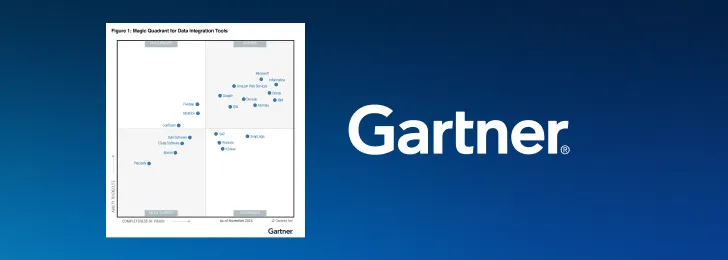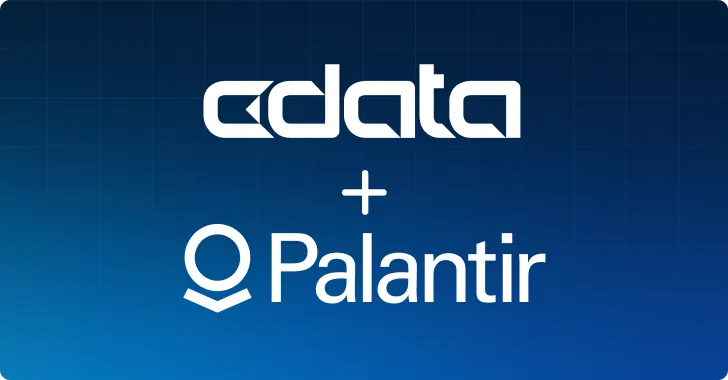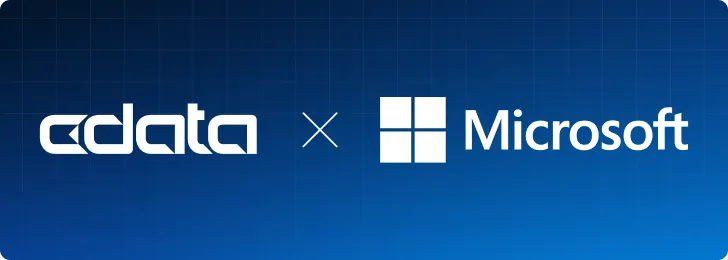
Understanding data pipelines is essential in the dynamic world of data management. This article explores what data pipelines are, how they work, and the crucial role they play in today’s business practices. By offering practical examples, we’ll equip you with the knowledge to make the most of your data resources.
What is a data pipeline?
Modern data pipelines are designed to transfer all kinds of data—no matter where it is, where it needs to go, or how it's formatted—across different organizational departments for a variety of uses. Data pipelines are essential for managing data, serving as a channel that transfers raw data from various sources to a central storage system like a data lake or data warehouse.
Data pipelines are crucial for organizations that rely on data-driven operations. In today’s business landscape, data is dispersed across different cloud services, databases, data warehouses, CRMs, ERPs, and more. Centralizing that data into an accessible system of record is crucial for organizations to gain a full picture of their business, customers, and financial health.
But it’s not always simple to ingest data from multiple sources – in multiple formats – into a single repository. Data doesn't always move through the pipeline unchanged; it's often transformed through processes like filtering, masking, and aggregating to fit certain formats and standards depending on how it will be used.
Once the data is processed and ready, it's stored for future use. Efficient data pipelines are essential for a variety of data-driven tasks, including analysis, reporting, and ML (machine learning) projects. They organize the flow of data, ensuring that it's valuable and usable, allowing organizations to extract deep insights and make informed decisions based on reliable, well-organized data.
How do data pipelines work?
Data pipelines work by automating the process of moving and transforming data from its source to a destination where it can be used for analysis and decision-making. Data pipelines manage and monitor the flow of data, ensuring that it moves smoothly from one stage to the next. They handle errors, log activities, and maintain performance and security standards. Here's a step-by-step breakdown of how they typically operate:
Ingestion: The process starts with data ingestion, where the pipeline collects data from one or more sources. They could be databases, APIs, file systems, cloud services, or streaming data from real-time sources.
Cleaning and validation: Once the data is ingested, it often undergoes initial cleaning and validation. This step ensures that the data is accurate and usable, removing or correcting any errors, inconsistencies, or irrelevant data.
Transformation: The next stage is transforming the data into a format suitable for analysis. This could involve a range of processes like normalization (standardizing data formats), enrichment (adding related information), and aggregation (combining data from different sources). These transformations are the "T" in ETL (extract-transform-load) pipelines.
Storage: After processing, the data is stored in a destination system. This could be a database, a data warehouse, a data lake, or any other storage solution suited to the pipeline's purpose and the nature of the data.
Additional processing: Depending on the pipeline's complexity, there may be additional processing steps. This can include more sophisticated data manipulations like deduplication, sorting, dependencies, business logic, and algorithms. This additional processing is the "T" in ELT (extract-load-transform) pipelines.
Analysis and utilization: Finally, the processed data is ready for analysis. It can be accessed by data analysts, BI tools, or other applications to generate insights and support decision-making to power data-driven insights.
3 Benefits of a data pipeline
A data pipeline provides a structured and automated process for connecting with, moving, and transforming data with efficiency and precision, eliminating data silos, and improving accuracy and reliability. Some key benefits:
High-quality data
Data pipelines greatly enhance data quality and consistency by standardizing how data is processed. This ensures that all data is handled uniformly, removing the risk of human error, which greatly improves its reliability and accuracy. Data integrity is maintained throughout its journey, ensuring that it remains consistent and trustworthy for accurate analysis and decision-making.
Efficiency and speed
Data pipelines automate and streamline the entire data-handling process. Automation speeds up the transfer and processing of data and ensures smoother workflows by eliminating manual intervention and potential bottlenecks. This leads to optimized use of resources, both in terms of time and computing power, allowing organizations to handle large volumes of data more efficiently.
Data integration
Data pipelines provide a streamlined and automated mechanism to consolidate data from diverse sources and formats, removing silos and providing broader insights. Data is automatically gathered, transformed, and standardized into a cohesive format, simplifying the complex task of merging data from multiple sources into a single, unified repository and ensuring compatibility. Data pipelines facilitate a more seamless and effective integration process, enabling organizations to achieve a comprehensive and unified view of their data landscape.
3 Types of data pipelines
Data pipelines are processed differently depending on the organizations’ needs to process data efficiently.
Batch processing
Batch processing does what its name suggests: It processes data in large batches collected over a predetermined timeframe (hourly, daily, weekly, etc.). Batch processing takes a lot of system resources and is usually performed during off-peak times when the process won’t impact other work in the system.
Batch processing is useful as a cost-effective method for gathering and analyzing historical data, compiling periodic reports, and simplifying data management and integration.
Near real-time processing
Many batch-based data pipelines use strategies like change-data-capture (CDC) or incremental processing to achieve near real-time processing of large amounts of data. With CDC or incremental processing, only the changes since the last execution enter the pipeline, so while an initial process can take a long time, subsequent processes are fast enough to allow for agile analytics on a changing dataset, like new leads gained during an outreach event or hourly sales figures for a retail store.
Streaming
Streaming data processing is the opposite of batch processing: Data is processed immediately as it comes in, enabling quick analysis and rapid response to changing conditions. A typical streaming data pipeline includes data from devices that are constantly measuring changing values, like medical devices, equipment gauges, etc.
Streaming data processing pipelines are appropriate for any situation that requires quick analysis of live data. Tracking inventory, analyzing financial data, predicting weather, and enhancing customer engagement by personalizing offers are all examples where real-time processing would be important.
Components of a data pipeline
A data pipeline architecture is typically composed of three key elements: the source, where data is ingested; the processing action, where data is transformed into the necessary form and format; and the destination, where the processed data is ultimately stored for future use.
Data source
This is the starting point of a data pipeline, where the data begins its journey. A pipeline can have several data sources, including databases, files, applications, cloud storage, streaming data from sensors or IoT devices, and APIs from external services. The source ingests the raw data and sends it on to processing.
Processing
Processing is the heart of the data pipeline. It's where the raw data from the source—or multiple sources—is transformed into a useful format. The steps involved in processing vary depending on several factors and can include cleaning (removing inaccuracies or duplications), normalization (standardizing data formats), transformation (converting data into a desired format or structure), and aggregation (combining data from different sources). Processing ensures the data is accurate, consistent, and in the right format for its intended use. This step often involves complex algorithms and computational processes, especially in handling large volumes of data or complex data types.
Destination
The destination is the endpoint of the data pipeline, where the processed data is stored and made accessible for further use. Common destinations include data warehouses (for structured data ready for analysis), data lakes (for storing vast amounts of raw data in its native format), databases, or even other applications like BI (business intelligence) tools or reporting dashboards. The destination data is ready to be put into action, providing insights to support business operations and decision-making initiatives.
Real-world examples and use cases of data pipelines
Data pipelines significantly reduce the manual effort and complexity associated with handling data. This improves efficiency, increases accuracy, and accelerates the speed at which data-driven tasks can be performed. A few real-world scenarios based on different data pipeline strategies:
Data integration
Data pipelines are often used to merge customer data from various channels into a single database. For example, a retail company may use a data pipeline to combine customer information from its online store, physical POS systems, and CRM (customer relationship management) software. The pipeline processes and standardizes the data and then loads it into a central customer database, allowing the company to gain a complete view of customer behavior.
Exploratory data analysis
Data pipelines are crucial for EDA (exploratory data analysis). Healthcare researchers in large-scale epidemiological studies, for example, need to analyze vast datasets (patient records, clinical trial data, external demographic information, etc.) to identify patterns and correlations related to diseases and treatments.
The data pipeline would ingest non-PII (non-personally identifiable information) data from various healthcare databases, research institutes, and public health records. The data is cleansed, normalized, and structured, allowing researchers to sift through massive volumes of data using statistical tools to uncover information concerning potential risk factors, different treatment protocols, or trends in disease spread.
Data visualization
Data pipelines are essential for financial investment firms to create detailed visualizations to guide investment strategies. For instance, an investment bank needs to analyze market trends, stock performances, and economic indicators so they can advise clients on portfolio management. A data pipeline aggregates data from stock exchanges, financial news sources, economic reports, and internal research. It then processes and filters the data, which is transformed and fed into advanced analytics platforms to create dynamic visualizations such as heat maps of market sectors, trend graphs of stock performance, and interactive dashboards showing real-time market sentiments.
Machine learning
Data pipelines are integral to the development of autonomous driving technology and depend heavily on machine learning for enhanced safety and performance. Autonomous vehicles generate vast amounts of data from sensors like LIDAR (light detection and ranging), radar, cameras, and GPS (global positioning systems), which need to be processed and analyzed in real-time to make split-second driving decisions.
This data pipeline would collect the sensor data, along with additional inputs like traffic conditions, weather data, and road maps. It then cleans, integrates, and preprocesses the data for use in machine learning models. The models are trained with the data to recognize patterns, obstacles, and road signs and then respond like a human driver to navigate traffic, avoid hazards, or adjust speed. The insights and continual learning help to advance autonomous vehicle technology, making cars smarter, safer, and more efficient on the road.
CData knows data pipelines
CData has solutions for smooth data integration with any source. Get the most out of your data—and your data pipelines—to power your analyses for timely, accurate insights.
Learn how CData can help you connect any data pipeline to any data source.
Discover CData data pipeline soluti





